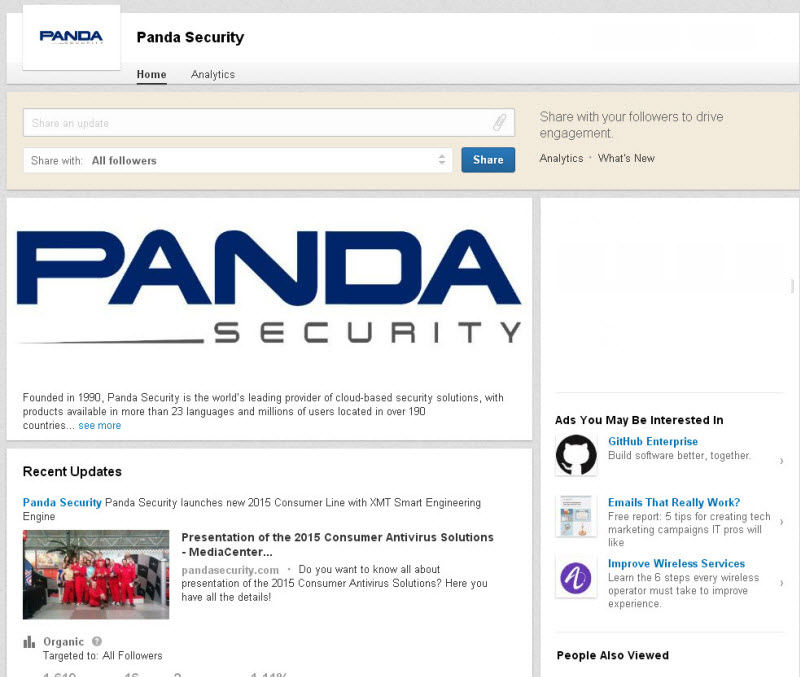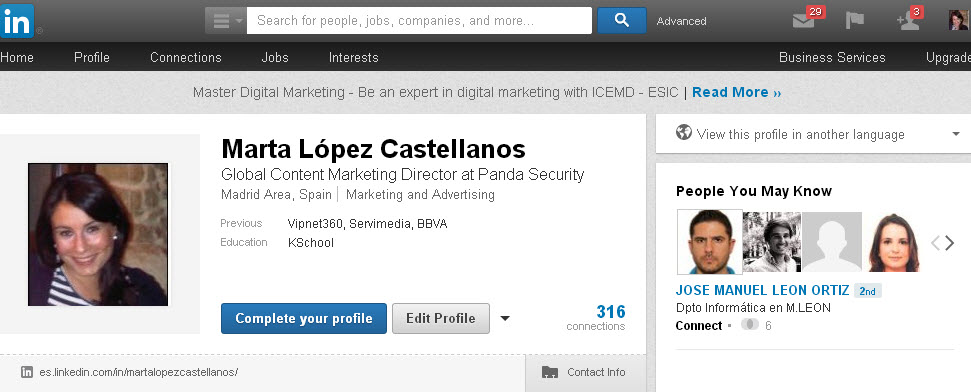An update on support scams: but are the scammers looking for fresh fields and posturings new?
The post Support Scams: Expect the Scammish Inquisition* appeared first on We Live Security.
![]()
An update on support scams: but are the scammers looking for fresh fields and posturings new?
The post Support Scams: Expect the Scammish Inquisition* appeared first on We Live Security.
![]()

Nowadays, practically everyone has a profile on LinkedIn. This is a useful tool for letting companies know who you are, your work experience, your present position and the best way to contact you. Along with other personal details, it is common to include an email address.
Yet despite these benefits, the platform also has its drawbacks, at least when it comes to security. The tool is not only useful for human resources managers, but also for spammers and cyber-criminals on the lookout for email addresses to which to send fraudulent messages.
More often than not, the real target of these attacks is not the owner of the email account, but the company where they work, and its data. For a cyber-criminal, this social network is like an address book containing the company email addresses of thousands of users, who use these addresses instead of their personal ones for any professional business.
Once they have found several accounts with the same company name, they make a note of the address structure (usually [email protected]). Then, with a slightly more refined search, they can get a list of all employees’ email addresses.

If the hacker knows the structure of the network that the company uses, they can access the system by sending an email to the employees in their address book. This mail might include, say, a link to a page where the recipients are asked to enter the username and password to access the organization’s platform. Once they have them, they have free reign to spy on internal information.
Those often excluded from the attack are the IT department, as they might rumble what’s going on. However, customer services, marketing, accounts, and human resources are much more attractive targets for hackers.
If the criminals manage to enter the systems, this is just the first step to getting other type of information: personal details, account numbers, passwords and databases can all be compromised.

Companies often encourage employees to have a presence on Linkedin. Yet saying where they work, looking for new customers and employees and increasing brand visibility on the Internet has its risks.
The post LinkedIn: How to avoid being scammed appeared first on MediaCenter Panda Security.
WordPress Refraction theme suffers from cross site scripting, path disclosure, and content spoofing vulnerabilities.
Moab suffers from an insecure message signing authentication bypass vulnerability. All versions up to 8 can be affected depending on the configuration.
Moab versions prior to 7.2.9 and 8 suffer from a user impersonation vulnerability.
Moab versions prior to 7.2.9 and 8 suffer from a dynamic reconfiguration authentication bypass issue that allows for remote code execution.